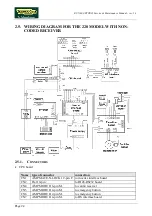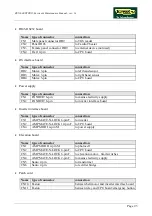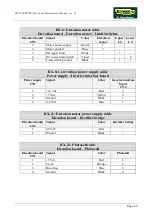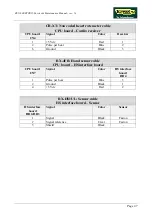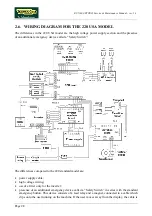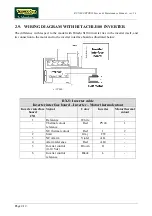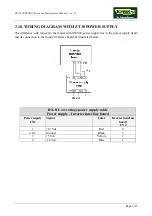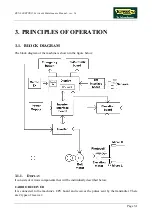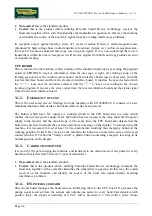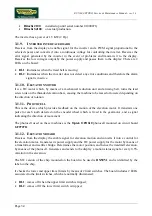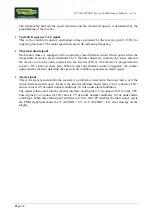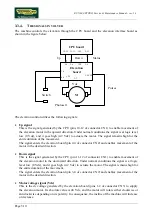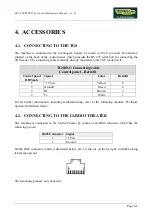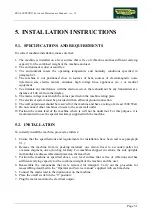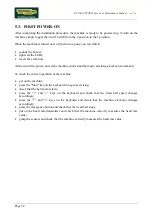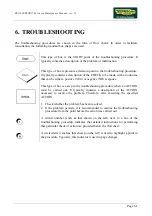
RUN 600 XTPRO: Service & Maintenance Manual - rev. 1.3
Page 3.2
•
Non-coded
: this is the standard product.
•
Coded
: this is the product which, utilizing Personal Coded Device technology, receives the
heart rate together with a code that identifies the transmitter in question. In this way the machine
can identify the source of the heart rate signal, thereby avoiding interference problems.
Its reception area is approximately a circle of 1 meter of radius. If there is electromagnetic noise
(produced by high voltage lines, radio transmitters, monitors, motors, etc.) within its reception area,
the receiver becomes saturated and stops receiving any signal. If it is non-coded and there are 2
transmitters within its area of reception, it will receive signals from both, and may produce an error
or irregular reading.
CPU BOARD
This is the heart of the machine, which controls all the machine functions by executing the program
stored in EPROM. It receives information from the user (age, weight, etc.) during set-up of the
training session, from the cardio receiver and/or the HS interface board (user’s heart rate), from the
inverter interface board and from the elevation interface board. It controls the speed selected with
the “+” “
−
” keys and the elevation selected with the “
↑
” “
↓
” keys or according to the chosen
training program. It receives the error signal from the inverter interface board and the status signal
from the elevation interface board.
3.1.2. E
MERGENCY BUTTON
This is the user safety device. Starting from the machine with SN 02000549, it consists of a new
maintained button which needs to be released after it has been pressed.
The button, which has a NC contact, is connected both to the CPU board and to a relay which
enables the inverter power supply. Once the button has been pressed, the relay shuts off the power
supply to the inverter and the motor stops. At the same time, the CPU board also detects that the
button was pressed, interrupts the exercise and shows a message on the display. To resume using the
machine, it is necessary to wait at least 5-10 seconds before returning the emergency button to the
working position. In the USA version of the machine, the button is connected in series with a reed
contact which is NC when the “Safety switch”, a plastic button containing a magnet, is resting in its
normal position on the display.
3.1.3. C
ARDIO TRANSMITTER
It is worn by the person using the machine, and transmits to the cardio receiver one pulse for every
heart beat that is detected. There are 2 types of transmitter:
•
Non-coded
: this is the standard product;
•
Coded
: this is the product which, utilizing Personal Coded Device technology, transmits the
heart rate together with a code that identifies the transmitter in question. In this way, the coded
receiver on the machine can identify the source of the heart rate signal, thereby avoiding
interference problems.
3.1.4. HS
INTERFACE BOARD
This circuit board manages the hand sensors, interfacing them to the CPU board. It processes the
analog signal received from the sensors and outputs one pulse for every heart beat detected, with
positive logic: the signal is normally at 0 Vdc, and is asserted to 5 Vdc (with a pulse whose
Summary of Contents for RUN 600 XTPRO
Page 1: ...SERVICE MAINTENANCE MANUAL REV 1 3...
Page 2: ......
Page 4: ......
Page 24: ...RUN 600 XTPRO Service Maintenance Manual rev 1 3 Page 2 14 Page intentionally left blank...
Page 36: ...RUN 600 XTPRO Service Maintenance Manual rev 1 3 Page 3 12 Page intentionally left blank...
Page 38: ...RUN 600 XTPRO Service Maintenance Manual rev 1 3 Page 4 2 Page intentionally left blank...
Page 82: ...RUN 600 XTPRO Service Maintenance Manual rev 1 3 Page 6 42 Page intentionally left blank...
Page 126: ...RUN 600 XTPRO Service Maintenance Manual rev 1 3 Page 8 10 Page intentionally left blank...
Page 156: ...RUN 600 XTPRO Service Maintenance Manual rev 1 3 Page 11 14 Page intentionally left blank...
Page 157: ......

